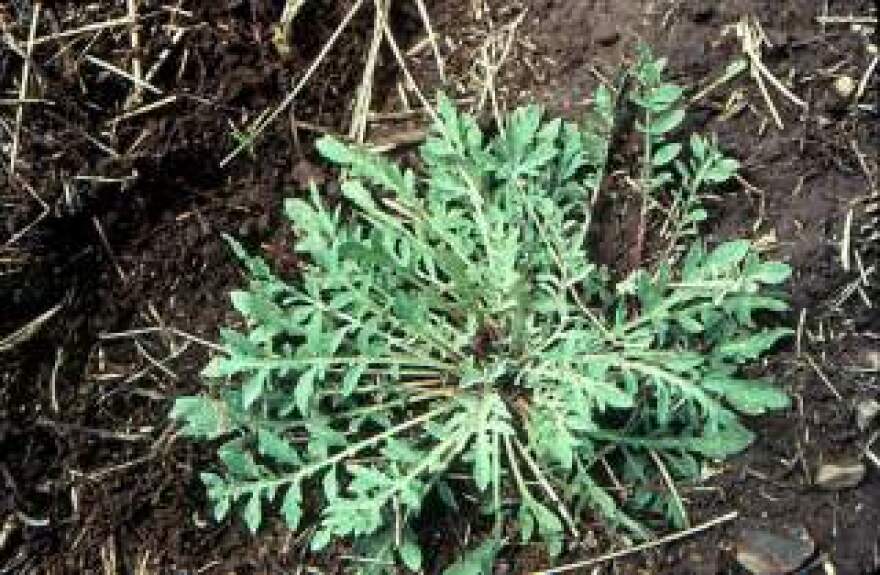When it comes to controlling the many non-native, invasive plants in northern Arizona, weed warriors call on every tactic in the book. As they seek to minimize the spread of a weed called diffuse knapweed, they’re turning to a tiny ally: a weevil that loves to eat knapweed seeds.
Diffuse knapweed is a low-growing shrub that originated on the Russian steppes. Since the 1980's, it’s taken over roadsides and pastures in the region. It’s a heavy seed producer and a tough competitor against native plants.
Enter the seed-eating weevil, which came from the same part of the world. When knapweed’s white to lavender flowers appear in summer, the tiny adult weevils eat the flowers and sip nectar. Those adults then lay their eggs in the flowers, and their larvae hatch and eat the developing seeds.
About six years ago biologists introduced the weevil to northern Arizona, as well as
another species that bores into knapweed roots. And each year ecologists ally with those weevils.
While knapweed is blooming in summer, an interagency group of ecologists and botanists comes to the “insectary.” The workers swoop nets through the plants, catching weevils by the thousands. Then they release them at other locations infested with the weed that don’t yet support weevils.
Weevils do overwinter and reproduce in knapweed stands, so after a few years they can substantially decrease weed populations. But their human helpers expect to continue catching and releasing weevils for some years to come.
For more information: wildwoodvb@earthlink.net


